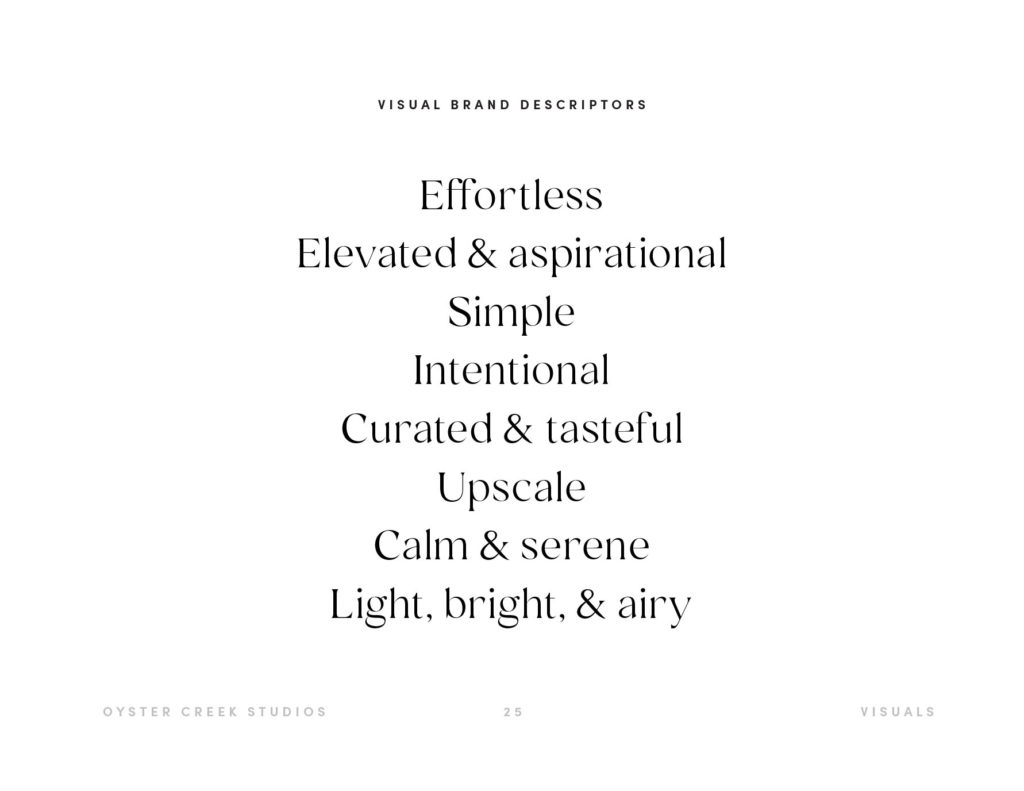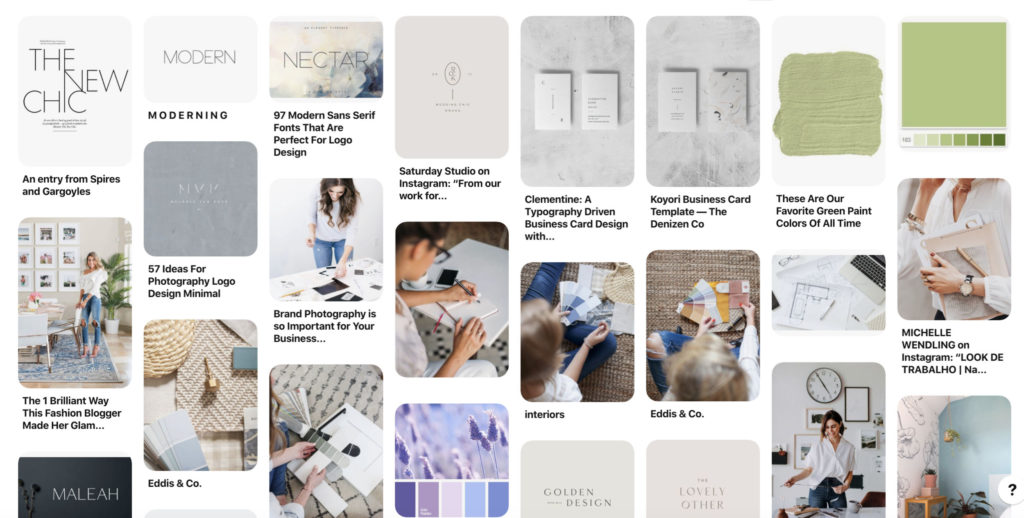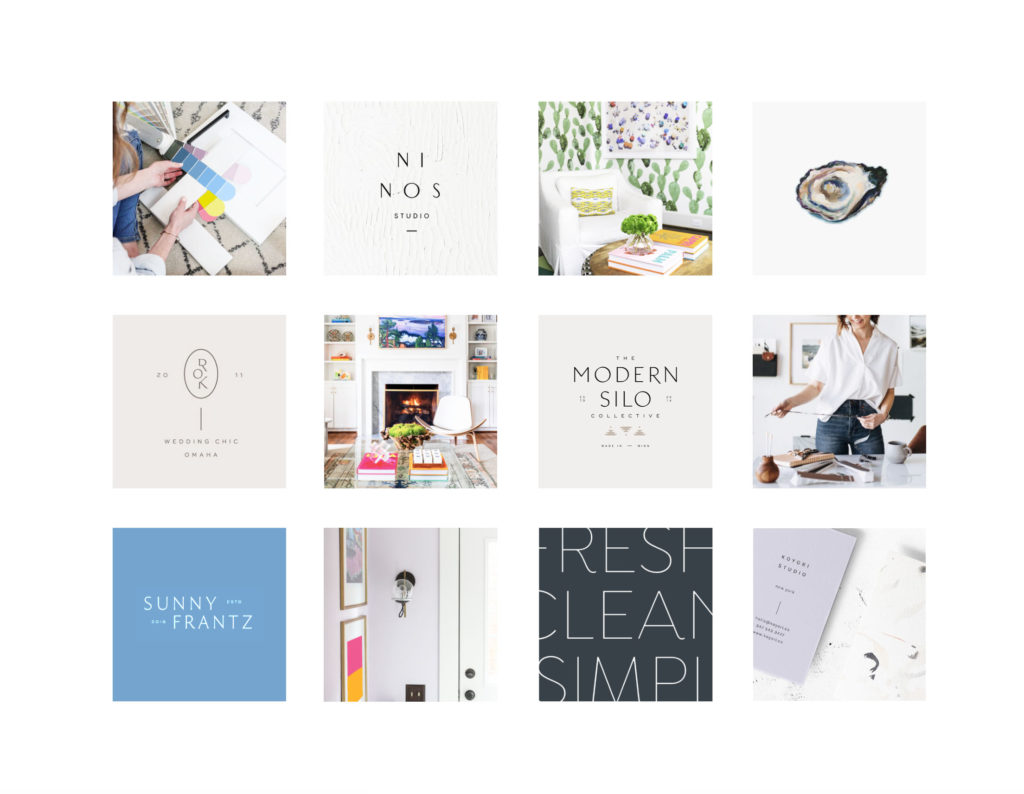How to Create a Moodboard for Your Business
A moodboard is a collection of photography, typography, and design that acts as a foundation for your brand’s visual identity. Creating moodboards is one of the most important parts of my Discovery Phase – because it’s the first time I see my clients’ brands come to life visually. (And it’s one of my favorite parts of the branding process!) Follow along for my exact “moodboarding” process.

1 — Define Your Audience
Before we even think about jumping into visuals, it’s incredibly important for you to have a good grasp on who your people are and what they love, need, and want. Jump into some research on the type of people your business serves, who is visiting your website or social media, and what they’re looking for.

2 — Curate Your Brand Words
I like to transition into visuals through words and phrases that best describe my clients’ brands. For example, is your brand youthful, energetic, and lively? Or is it peaceful, laidback, and down-to-earth? Modern or classic? Simple or complex? The answers to these questions help us bridge the gap from the written word to your brand’s first visuals.

3 — Image Search
I like to create secret boards in Pinterest and then go to town pinning any and all images that I feel accurately represent my clients’ brand words, aesthetic, tone, and feel. I grab a good mix of typography, lifestyle photography, color swatches, interior design & fashion photography, and examples of design collateral. Sometimes I’ll pin hundreds of images!

4 — Sort & Choose
I save all the images from my Pinterest board to my computer and open up a fresh artboard in Adobe Illustrator. Narrow down the images you found to a list of 12 – I like a good mix of dark & lighter images. This can be difficult – but I prioritize images I KNOW I’m going to use, then those I think might work, then those that can be swapped out. You may need to try several combinations until the mix feels right.

5 — Lay It Out
Make a 3 x 4 grid in Illustrator, and alternate images by darkness/lightness & subject matter. I try not to have too many similar images touching – it makes the moodboard look cleaner and more organized. You may need to swap some images around or go back to Pinterest if you find that something’s missing. This could take forever – just remember to trust your gut!
And voila – your moodboard is complete! The next step is to create a color palette and write out the rest of your brand strategy document. For each of my clients, they receive a fully fleshed out brand strategy that includes a brand, audience, and competitor overview, along with customized brand words, a “brand path” (how a potential client interacts with your brand), and of course a moodboard and color palette. This document acts as the foundation of all the work we do from then on out – and is wonderful to reference even well after the brand visuals are complete and packaged.